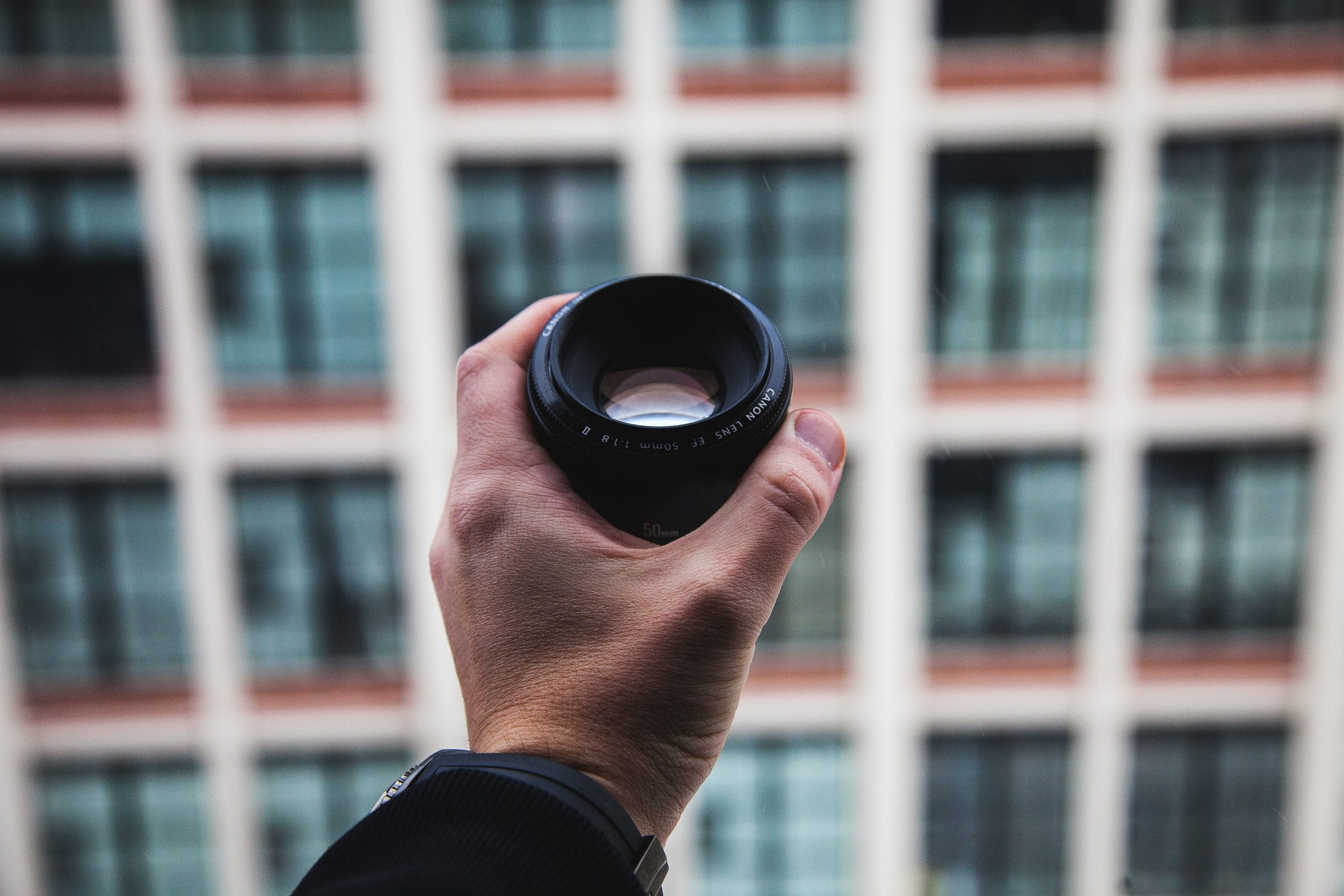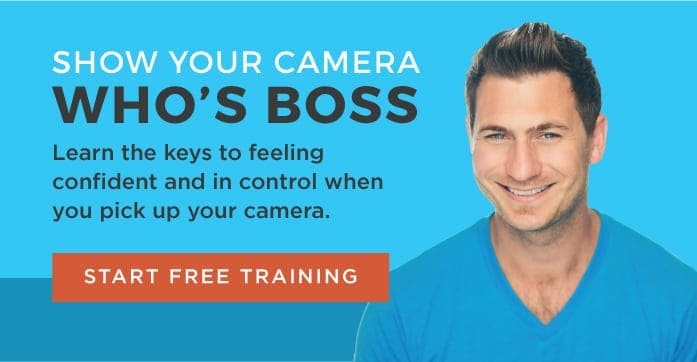- Total216
- Facebook162
- Pinterest39
- Email15
Top 5 Reasons You Need A 50mm Lens

Overview
For every photographer, there are five factors that contribute to the quality of a photograph.
In order of importance, those are: the photographer, the lens, the camera, the post processing, and the final print.
Since you’re here, you’re already improving the first factor (the photographer) by expanding your knowledge. The next most important factor is the lens. Most new photographers think the first lens to buy (not including the kit lens that came with your camera) is a telephoto lens. While there are some surprising benefits to having a telephoto lens in your bag, your first lens should be a 50mm prime lens.

1. It’s Compact and Light
While it may seem more helpful to have the flexibility of a zoom lens, a prime lens has some important benefits.
A prime lens does not have the motor that zoom lenses have, which means they are a fraction of the weight. And since most zoom lenses “telescope out” in size when they zoom in, they are much larger than a prime.
A 50mm prime is much easier to travel with, since it is lighter and more compact than a zoom lens is.
2. Its Affordability
Extra pieces and moving parts equal more engineering. That engineering always increases cost. Lacking the motor and telescoping body of zoom lenses, prime lenses are much more affordable.
A high-end prime lens can still be expensive. That has more to do with the quality of the glass, premium aperture elements, and in-lens image stabilization. An entry- or mid-level 50mm lens is one of the most affordable lenses available.
Since almost all photographers have at least one 50mm lens in their kit, every major photography brand offers them. As a result, the quality of these lenses remains high, at an affordable price. This is true even for entry-level models.

3. It’s a Skill Boost
It’s true! A prime lens can make you a better photographer, which as we mentioned above, is the first influencing factor of a good photograph.
Since a prime lens has a fixed focal length, the photographer must move around in order to re-compose the shot. This means that the photographer is re-engaging with the subject on every shot; trying new angles, new distances from the subject, new backgrounds, etc. This constant re-imagining of the subject will develop both the creative and the technical skills of the photographer at once.
Before we stray too far from the prime vs zoom discussion, there’s another happy byproduct of a prime lens which is worth mentioning. A prime makes the photographer Invisible. Well, less visible. Ok ok… less noticeable. But that’s still a superpower for a photographer.
When photographing a wedding, for example, the photographer should go unnoticed as much as possible. It’s very distracting to hear the long, loud zoom of a lens while the happy couple are exchanging their rings. You might need to get a bit closer to get the shot you need, but if you’re quiet, that’s less obtrusive than the whine of a zoom lens motor in a quiet room.
4. Its Versatility
“But I’m not a wedding photographer!” some might protest. No problem! Let’s say your client is the editor of a magazine, and they want you to capture the essence of your hometown. The sound of a zoom lens is not a relevant factor.
Since the field of view of a 50mm lens is very close to what the human eye sees, it’s adept at capturing the human experience. With a trusty 50mm, you’ll be able to capture a wide angle, such as a busy street downtown with all of its people, cars, storefronts, and foliage. You’ll also be able to capture the details, perhaps with a field of view no bigger than the top of a cafe table.
A macro lens is a specialized lens for tiny details. It won’t be of much use for a wider shot like a view down the street. On the other end of the spectrum, a zoom lens has a longer minimum focusing distance, which makes it harder to get a shot of smaller subjects. A 50mm is right in between.
5. It’s Fast
The speed of a lens refers to its aperture. A fast lens is one with a high f-number, such as f1.8. (This is the other “number” of a lens, besides its focal length, i.e., a 50mm f1.8 lens is common).
At first, it seems counterintuitive that a high f-number is a low numerical number. But we’re not talking in straightforward measurements like miles per hour, where higher numbers equal faster speeds. In cameras, a high f-number means that it can achieve good exposure at faster shutter speeds, letting in the same amount of light in less time. The “f” is one variable in an algebraic equation, but that’s a topic for a different class. For now, just imagine a scale from 1 to 24, with 1 on top and 24 at the bottom. Higher equals faster.
Back on topic, 50mm lenses are faster than zoom lenses. A 70-300 lens might have a maximum speed of 4.6, whereas a 50mm prime is around 1.8.
Why is this important? If a lens has a high f-number, it will be better at two things:
- Shoot in Low Light: The less light there is in a scene, the longer the shutter needs to be open to complete the exposure. The longer the shutter is open, the more unwanted blur you will get, even with a very steady hand. A fast lens can capture a dark scene without too much motion blur. A 50mm 1.4 lens would be an excellent choice for scenes with deep ambiance, like your next dinner party, or your niece lit only by the candles of her birthday cake.
- Shallow Depth of Field: Ever see a subject in sharp focus, with a blurry background behind them? This is an intentional blurring effect, also called “bokeh,” that turns “ok” shots into exceptional ones.


Faster is better… almost always. We have a head-to-head comparison here, where you can see how a 50mm f1.4 stacks up against a f1.8.
Conclusion
Most cameras come with a cheap (and sometimes effective) 18-55mm kit lens to get you started. Not a lot of zoom, and not very fast, but enough to get you out the door.
We’ve outlined the top reasons a 50mm should be your first lens purchase after the camera itself. But just because it’s your first lens doesn’t mean you’ll ever graduate from it. Most photographers try out and buy several 50mm lenses throughout their shooting career and always have their favorite one in their bag at all times.
The reasons to get the 50mm never become obsolete. These lenses get more and more useful as you gain experience.
If you’re ready to start pursuing YOUR photography dreams today, check out my FREE training that will equip you to Show Your Camera Who’s Boss. People who take my free training walk away a more confident camera user and better photographer. JOIN ME HERE!
- Total216
- Facebook162
- Pinterest39
- Email15









